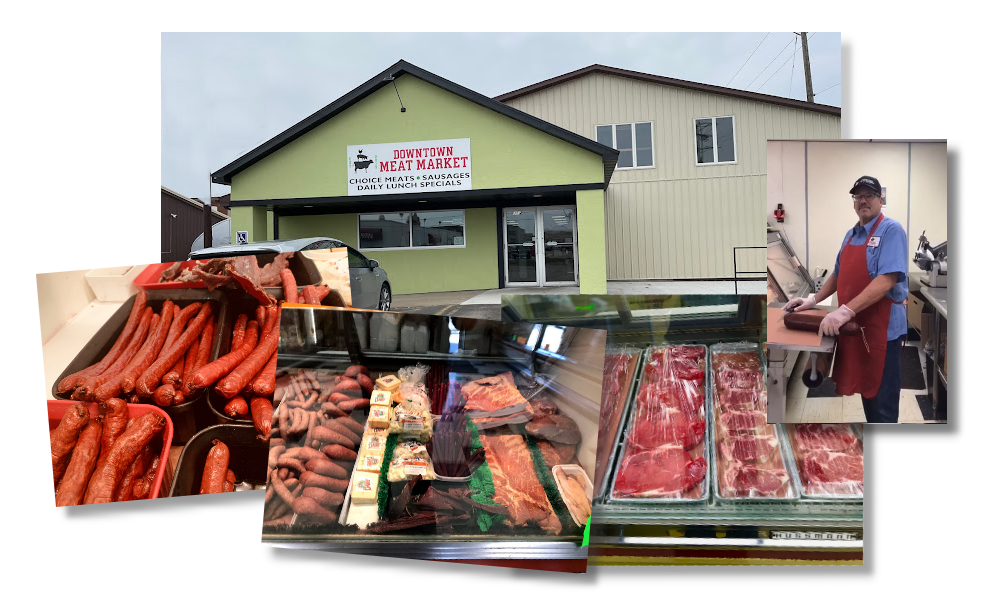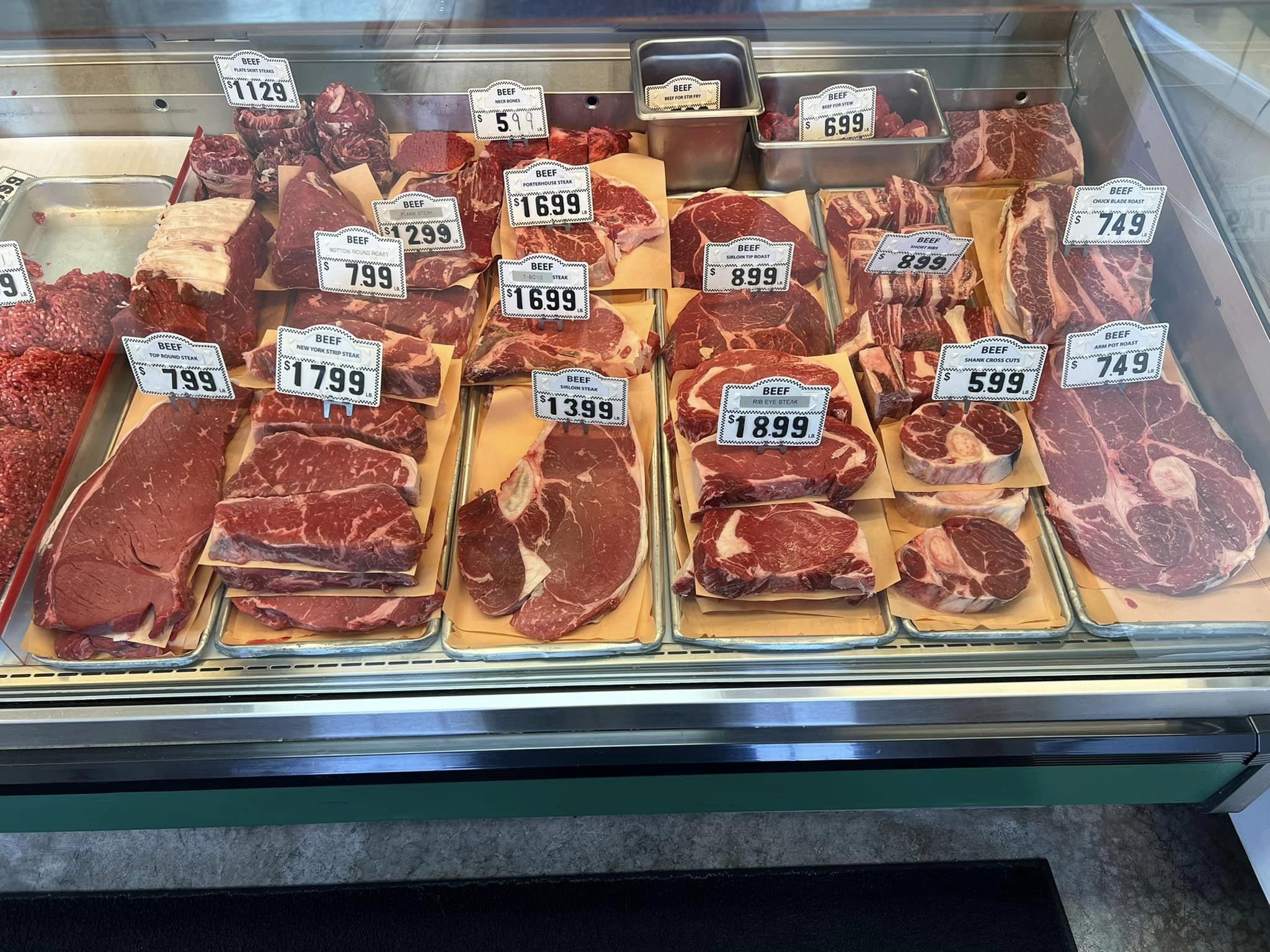Reveal the Art of the Butcher's Cut in a Modern Meat Market
In the ever-evolving landscape of modern meat markets, the butcher's cut has actually transcended its conventional roots, merging old-time workmanship with modern methods. Today's butchers are not simply processors of meat; they are knowledgeable artisans who emphasize sustainability and ethical sourcing. Their knowledge in selecting and preparing cuts tailored to details cooking requirements offers an unrivaled dining experience. Yet, what truly establishes the contemporary butcher apart is their capability to forge a deeper connection in between consumers and the beginnings of their meat. Just how do these masters balance tradition with technology, and what effects does this have for the future of meat intake?
Advancement of Butchery Strategies
The development of butchery strategies reflects an abundant tapestry of development and adaptation driven by advancements in innovation, changes in consumer need, and a deeper understanding of meat science. Historically, butchery was a craft gave via generations, with techniques sharpened over centuries to make the most of return and taste. The industrial transformation ushered in automation, transforming traditional techniques and enabling large handling.
The mid-20th century saw butchery methods better fine-tuned by clinical insights right into muscular tissue biology and meat aging, boosting both tenderness and preference. Developments like vacuum cleaner product packaging and refrigeration expanded item shelf-life, allowing butchers to diversify offerings and improve top quality control. This duration additionally noted the rise of specialized equipment, such as band saws and meat slicers, which enhanced precision and performance in meat processing.

The 21st century has actually presented electronic modern technology right into the butchery world. Computerized systems now aid in tracking pet provenance and maximizing cuts to fulfill particular client preferences. Additionally, a resurgence in artisanal butchery has arised, mixing standard skills with modern knowledge to accommodate customers seeking ethical and lasting meat alternatives. This development underscores a dynamic interaction in between tradition and innovation, conference modern demands while maintaining the craft's heritage.
Understanding Meat Cuts
Understanding the details of meat cuts is important for both butchers and customers looking for quality and worth. For butchers, specific cuts reflect skill and regard for the craft, ensuring very little waste and optimum return.

Understanding muscular tissue make-up is critical; muscles utilized much more frequently by the pet have a tendency to be tougher and are best fit for sluggish cooking approaches, while less-used muscles, like those located in the loin, are a lot more tender and ideal for cooking or roasting. Experience with these differences encourages consumers to make enlightened options, enhancing their cooking endeavors.
Choosing Quality Meat
Selecting the best meat entails even more than just choosing an aesthetically attractive item from the display. bagley farms meat market edwardsville il. The art of picking quality meat needs a critical eye and understanding of details features that represent quality and excellence. First of all, take note of the shade; beef should have a brilliant, cherry-red tone, while lamb ought to show a soft pink tone, and pork a pale pink. This suggests the meat is fresh and hasn't been revealed to oxygen for too long.
Secondly, consider the marbling, which refers to the white flecks of fat within the muscle mass. Correct marbling is a vital indicator of tenderness and flavor, as it melts during cooking, enhancing the meat's juiciness. Keep in mind, higher marbling commonly associates with exceptional top quality cuts, such as USDA Prime.
Appearance is an additional critical factor; meat ought to feel firm to the touch, not slimy or overly soft. Additionally, bear in mind the scent. Fresh meat should have a tidy, neutral scent, without Get More Info any sour or off-putting smells.
Coupling Cuts With Cooking Methods

On the other hand, harder cuts like brisket and chuck roast are abundant in collagen, which breaks down into gelatin when cooked gradually. These cuts are ideal for braising or slow roasting, enabling the meat to tenderize gradually and develop deep, complex flavors. Cuts such as brief ribs and pork shoulder get on well with slow-cooking approaches, where expanded cooking times change their durable appearances right into delicious recipes.
Lamb shanks and oxtail, which require prolonged cooking to tenderize, are perfect prospects for cooking or slow-moving simmering. These approaches coax out abundant, passionate flavors while keeping dampness. By understanding the unique features of each cut, cooks and home chefs alike can raise their culinary creations, making sure each dish is both pleasing and memorable.
The Butcher's Duty Today
Browsing the developing landscape of the modern-day meat market, the butcher's duty today expands beyond simple preparation of cuts. Contemporary butchers are culinary artisans, educators, and discover here advocates for lasting techniques. They link the void between the farm and the fork by guaranteeing moral sourcing, understanding pet husbandry, and focusing on openness in the supply chain. This change mirrors the expanding consumer need for top quality over quantity, where provenance and pet well-being are extremely important.
Along with crafting specific cuts, butchers currently engage straight with customers, using cooking advice and tailoring options to fit private needs and choices. Their knowledge in meat aging, marbling, and flavor accounts equips customers to make informed decisions, improving their cooking experiences. This personalized service exemplifies the butcher's evolving role as a trusted advisor in the cooking area.
Moreover, butchers are pivotal in reducing waste, utilizing whole animals to develop varied products such as sausages and supplies. This thorough technique not only respects the pet however likewise straightens with modern sustainability goals. By doing this, the modern-day butcher embodies both custom and development, adapting to an ever-changing market while protecting the virtuosity and honesty of their craft.
Verdict
The contemporary butcher's craft elaborately weaves conventional methods with modern-day developments, emphasizing lasting methods and moral sourcing. Mastery in a knockout post understanding varied meat cuts and quality signs empowers butchers to supply informed suggestions, straightening specific cuts with optimal cooking techniques. This experience not only boosts cooking experiences yet additionally enhances the link in between consumers and the origins of their food. By honoring historic practices while accepting modern needs, the butcher's function stays vital in today's innovative meat market (bagley farms meat market edwardsville il).